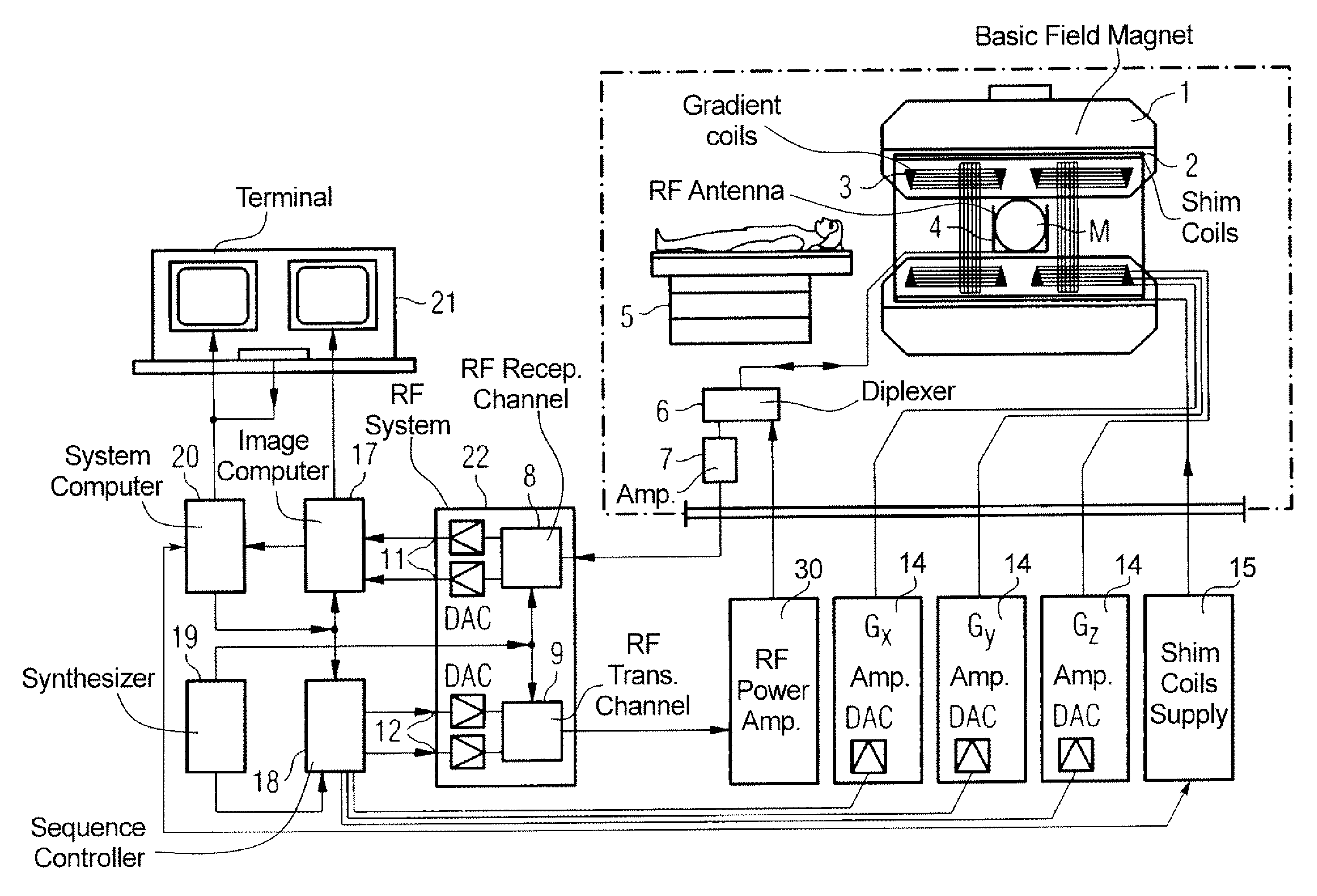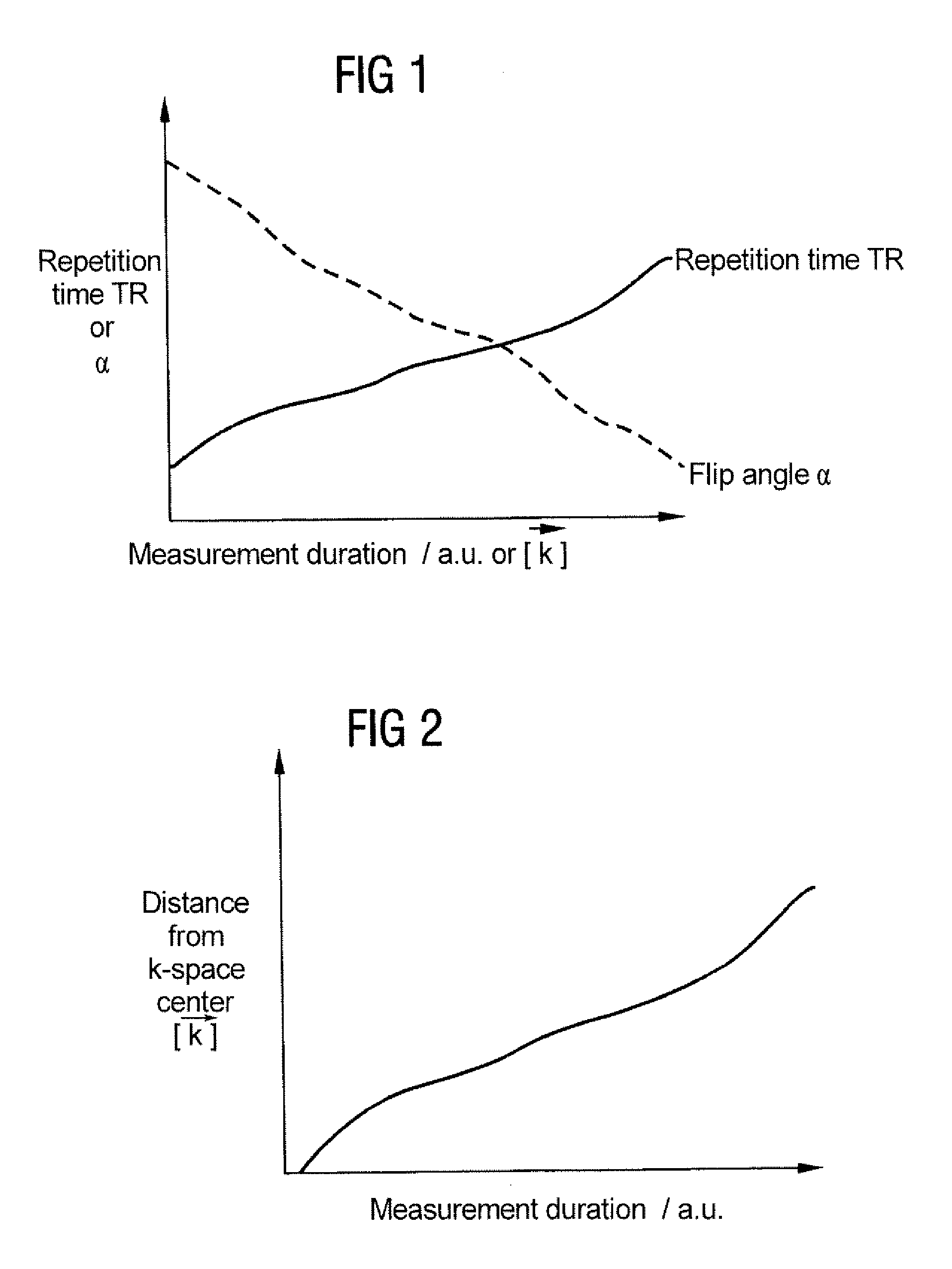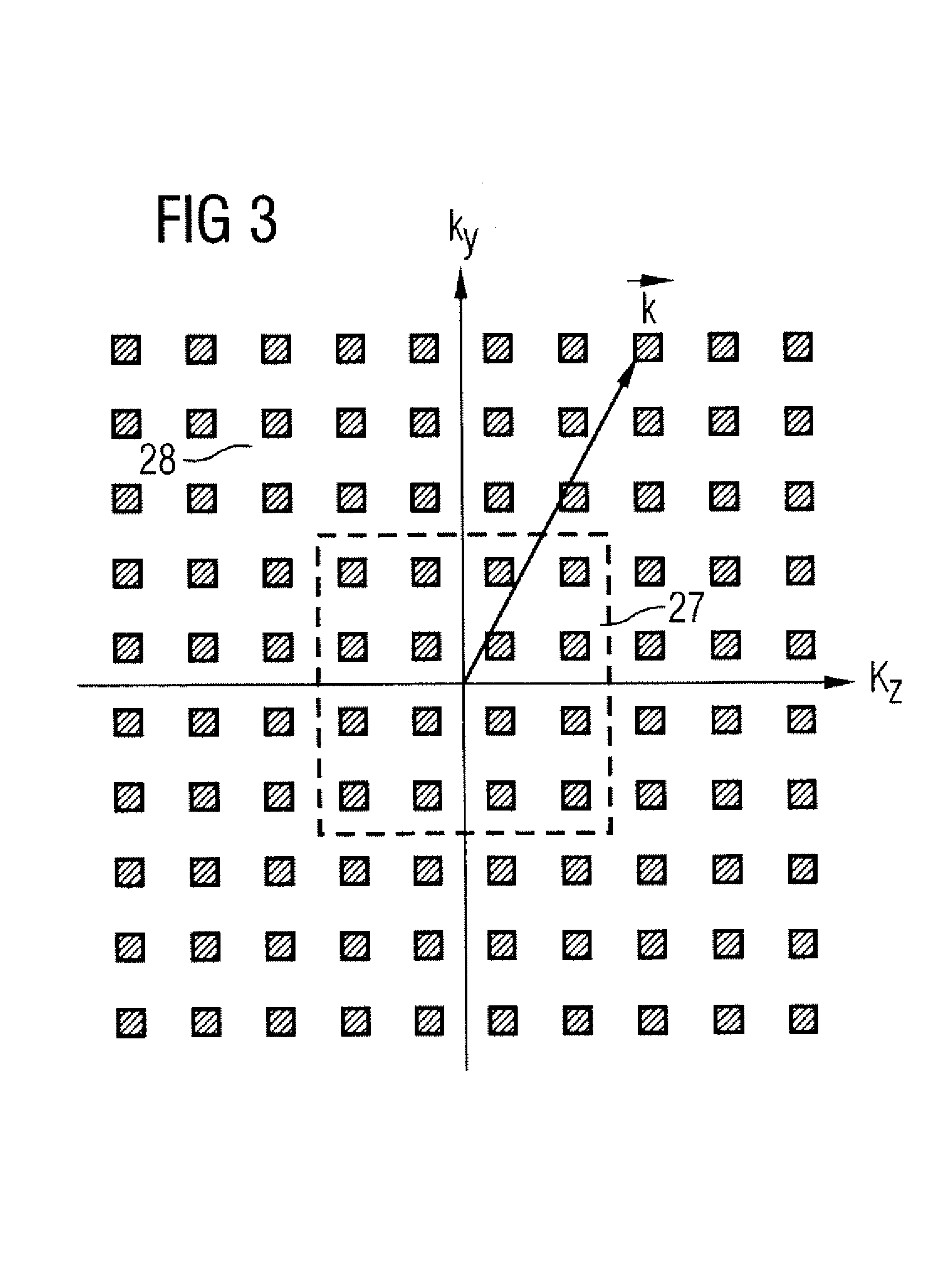Method and apparatus for improving the vessel/tissue contrast in time-of-flight angiography of a magnetic resonance tomography measurement
a technology of time-of-flight angiography and magnetic resonance tomography, which is applied in the field of magnetic resonance tomography, can solve the problems of insufficient time for the magnetization to build up completely, low blood flow velocity, and inability to achieve the ideal case in reality, etc., and achieve the effect of improving the contrast of time-of-flight angiography
- Summary
- Abstract
- Description
- Claims
- Application Information
AI Technical Summary
Benefits of technology
Problems solved by technology
Method used
Image
Examples
Embodiment Construction
[0029]FIG. 5 is a schematic illustration of a nuclear magnetic resonance tomography apparatus with improved contrast behavior of MR time-of-flight angiography exposures according to the present invention. The basic components of the magnetic resonance tomography apparatus correspond to those of a conventional tomography apparatus, with the differences discussed below. A basic field magnet 1 generates a temporally constant, strong magnetic field for the polarization or alignment of the nuclear spins in the examination region of a subject such as, for example, a part of a human body to be examined. The high homogeneity of the basic magnetic field required for the magnetic resonance measurement is defined in a spherical measurement volume M into which the parts of the human body to be examined are introduced. For satisfying the homogeneity requirements and, in particular, for eliminating time-invariable influences, shim plates of ferromagnetic material are attached at suitable location...
PUM
 Login to View More
Login to View More Abstract
Description
Claims
Application Information
 Login to View More
Login to View More - R&D
- Intellectual Property
- Life Sciences
- Materials
- Tech Scout
- Unparalleled Data Quality
- Higher Quality Content
- 60% Fewer Hallucinations
Browse by: Latest US Patents, China's latest patents, Technical Efficacy Thesaurus, Application Domain, Technology Topic, Popular Technical Reports.
© 2025 PatSnap. All rights reserved.Legal|Privacy policy|Modern Slavery Act Transparency Statement|Sitemap|About US| Contact US: help@patsnap.com



